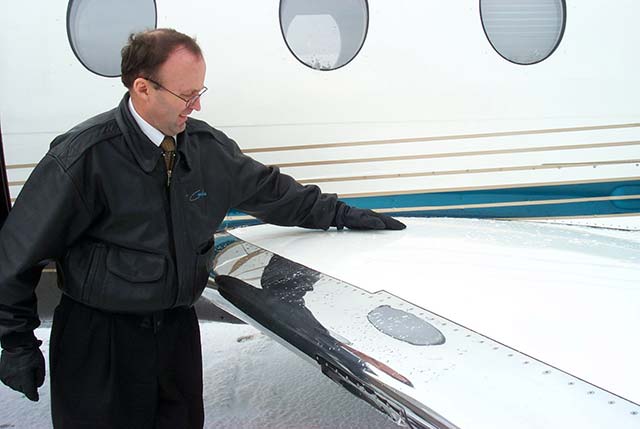A Pilot's Guide to Ground Icing
Module II - Cues
How to tell when you should worry
Section: Detecting Contamination
Start This SectionDetecting Contamination Cues
Weather reports can be used to help you anticipate frozen contamination on the ground and in the air. If in-flight icing conditions are anticipated, but your aircraft is not certified for flight in icing, delay departure. When you do the preflight walk-around, only a thorough visual and tactile inspection of the aircraft will tell you if you actually have contami-nation, even if you took preventative measures.
As part of the walk-around, look very closely at your aircraft. If it's snowing or raining, an icy wing can look like a wet wing. Run your hand across the surface to help identify whether the contamination is frozen or not. Touch will also help determine if a layer of water has frozen to form a light ice sheet on top, or conceals a layer of ice at the aircraft surface. Look deep inside the intakes, where snow and ice can be hidden from view. If you have a high wing, or high engine intake, use steps or other access equipment to make an adequate inspection.



